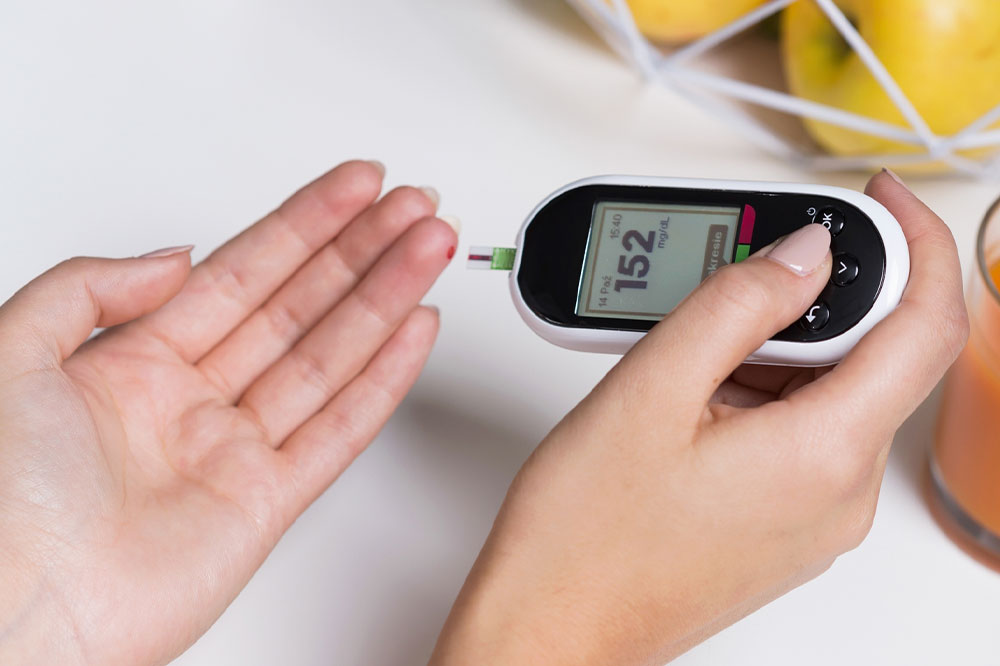Comprehensive Guide to Hyperglycemia and Diabetes Management: Recognizing Symptoms, Understanding Risks, and Effective Prevention Strategies
This comprehensive article explores hyperglycemia and diabetes, highlighting symptoms, risk factors, long-term complications, and effective prevention strategies. Understand the vital differences between types of diabetes, recognize early warning signs, and learn practical tips to manage and reduce risk through lifestyle changes. Essential reading for those seeking to comprehend the importance of maintaining healthy blood glucose levels and staying ahead of potential health issues related to diabetes. Empower yourself with knowledge to lead a healthier life.

Comprehensive Guide to Hyperglycemia and Diabetes Management: Recognizing Symptoms, Understanding Risks, and Effective Prevention Strategies
Elevated blood sugar levels, known medically as hyperglycemia, are a critical concern for millions worldwide. Understanding what high blood sugar entails, its connection to diabetes, and methods to prevent or manage the condition is essential for maintaining overall health. Diabetes remains a leading global health challenge, affecting over 537 million adults—including many who are undiagnosed. Early recognition of symptoms, awareness of associated risks, and adopting preventive lifestyle strategies can significantly reduce the likelihood of developing severe complications.
What Does Elevated Blood Sugar Mean, and How Is It Connected to Diabetes?
Hyperglycemia occurs when there is more glucose in the bloodstream than normal. Glucose primarily comes from the food we eat, especially carbohydrates, and serves as the body's primary energy source. Under normal conditions, the pancreas releases insulin—a hormone that helps cells absorb and utilize glucose efficiently. When insulin production or effectiveness is impaired, glucose begins to accumulate in the blood, leading to hyperglycemia. Persistent high blood sugar levels are the hallmark of diabetes, a chronic metabolic disorder with serious health implications if left unmanaged.
Understanding the Types of Diabetes
Type 1 Diabetes: An autoimmune disorder predominately affecting children and young adults, where the body's immune system mistakenly destroys insulin-producing beta cells in the pancreas. This form requires lifelong insulin injections or pump therapy because the body cannot produce insulin naturally. The precise cause remains unknown, but genetic and environmental factors play roles.
Type 2 Diabetes: The most prevalent form, accounting for approximately 90-95% of all diabetes cases worldwide. It develops when the body becomes resistant to insulin or when the pancreas doesn't produce enough insulin to meet the body's needs. Often linked to lifestyle factors such as diet, exercise habits, and obesity, Type 2 diabetes can often be managed or prevented through lifestyle modifications.
Gestational Diabetes: Occurs during pregnancy, usually around the 24th to 28th week, when pregnancy hormones cause insulin resistance. This condition can affect fetal development and increase risks for both mother and child, including the likelihood of developing Type 2 diabetes later in life for the mother.
Prediabetes: A condition where blood sugar levels are elevated but not high enough to qualify as diabetes. Fasting blood glucose levels above 110 mg/dL but below 125 mg/dL indicate prediabetes, which is reversible with lifestyle changes. Left unchecked, prediabetes can develop into full-blown Type 2 diabetes.
Factors Contributing to the Risk of Developing Diabetes
Several risk factors increase the likelihood of developing diabetes, especially Type 2 and gestational forms. These include advancing age, a family history of diabetes, sedentary lifestyle, obesity, and certain ethnic backgrounds such as African American, Hispanic, Native American, and Asian populations. Other notable factors are pregnancy history (notably gestational diabetes), hormonal disorders like polycystic ovarian syndrome (PCOS), high blood pressure, and abnormal cholesterol levels. Lifestyle choices, including poor diet, smoking, and excessive alcohol consumption, also significantly influence risk levels.
Recognizing the Signs and Symptoms of Type 2 Diabetes
Early detection is crucial for managing diabetes effectively. Common symptoms include persistent increased thirst and hunger, frequent urination, unexplained fatigue, irritability, and blurred vision. Other signs are slow-healing wounds, heightened susceptibility to infections, and high ketone levels in urine. Recognizing these symptoms early can lead to timely intervention, reducing the risk of long-term complications.
Long-term Complications of Uncontrolled Diabetes
When blood sugar levels remain high over extended periods, it can cause significant damage to organs and tissues. Chronic hyperglycemia can lead to serious health issues such as kidney failure (nephropathy), cardiovascular diseases including heart attacks and strokes, diabetic retinopathy eventually progressing to blindness, and neuropathy leading to nerve damage. Additionally, untreated diabetes can result in limb amputations due to poor circulation and infections, underscoring the importance of blood sugar control.
Prevention and Lifestyle Strategies
While Type 1 diabetes isn't currently preventable, lifestyle modifications can significantly reduce the risk of developing Type 2 diabetes and gestational diabetes. Key strategies include maintaining a balanced diet rich in whole grains, fruits, vegetables, and lean proteins. Regular physical activity—aiming for at least 150 minutes of moderate exercise per week—helps improve insulin sensitivity. Managing stress through relaxation techniques, adequate sleep, and avoiding smoking or excessive alcohol intake are also beneficial.
Effective Blood Sugar Management Tips
To optimize blood sugar levels, focus on dietary choices that support metabolic health. Incorporate whole grains such as oats, brown rice, and whole wheat bread, along with plenty of water and unsweetened beverages. Replace trans fats with healthier unsaturated fats found in nuts, seeds, olive oil, and fatty fish like salmon. Limit processed meats, red meats, and sugary snacks. Instead, include high-protein foods like beans, lentils, nuts, poultry, and fish to help stabilize blood glucose levels. Regular monitoring with blood glucose tests, following medical advice, and staying active are integral to effective management.
If you have concerns about your blood sugar levels or risk factors, consult a healthcare professional who can provide personalized guidance, conduct necessary tests, and develop a tailored management plan to help maintain optimal health and prevent complications.





